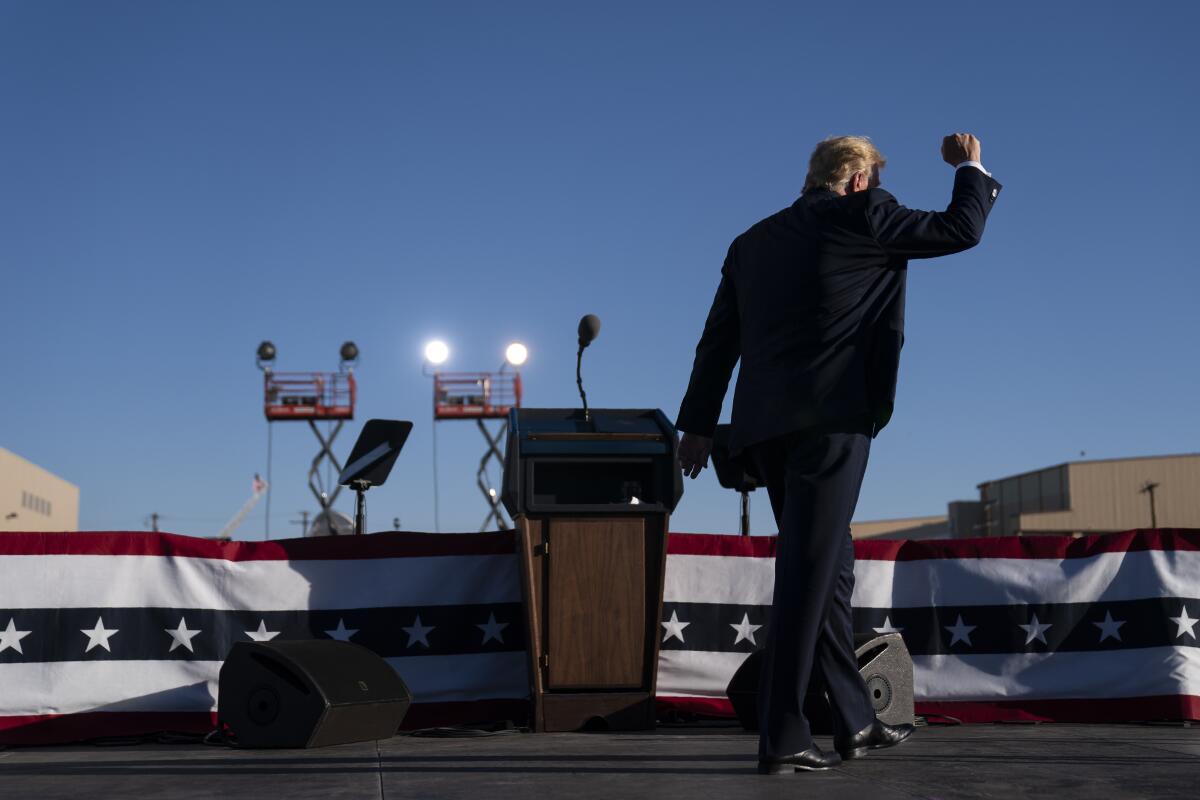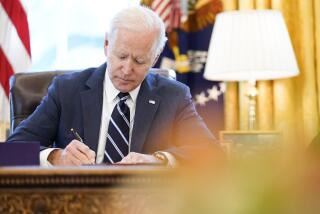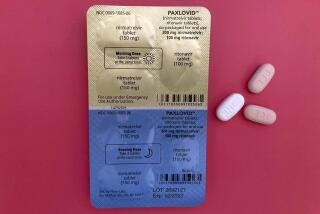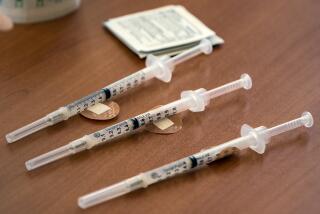Trump doled out billions to drug makers and hospitals with few strings attached

- Share via
WASHINGTON — The Trump administration has pumped billions of dollars into the healthcare industry during the COVID-19 crisis, padding bottom lines at some of the country’s most profitable businesses even as millions of Americans have been left struggling with mounting medical bills.
And although taxpayer money has poured into drug makers, hospital systems and medical distributors, administration officials have put few requirements on the businesses that took public assistance.
Pharmaceutical companies could charge more for vaccines and treatments developed with public money.
Medical distributors that received government assistance to air-lift supplies from China this spring were able to sell the material at undiscounted prices.
And hospitals sustained with bailout money will be free to raise prices on patients for years to come.
“This was taxpayer money,” said Elizabeth Mitchell, president of the Pacific Business Group on Health, a consortium of large companies, including Boeing, Safeway, Walmart and Wells Fargo, that have worked to control healthcare costs.
“Any effective investor says we want to see something for our investment,” she said. “I’m very concerned that all we’ll get out of this is an even more expensive healthcare system than we had going into the pandemic.”
Overall, many large healthcare companies have been piling up profits during the pandemic.
The 25 biggest healthcare companies — including drug makers, health insurers, medical supply companies and hospitals — recorded more than $63 billion in profits in the first two quarters of 2020, according to a Times analysis of company data aggregated by FactSet, a financial analysis firm.
Profits just for drug companies and medical distributors that received taxpayer assistance during COVID top $24 billion through the first half of the year, The Times analysis found.
The government largesse for an industry that already costs Americans more than any healthcare system in the world contrasts sharply with the federal government’s strategy for rescuing automakers, banks and other financial institutions during the Great Recession a decade ago.
During that crisis, recipients of taxpayer bailouts were subject to restrictions and requirements that public aid be recouped, which largely occurred.
The Trump administration’s lenient rules for corporate recipients of COVID-19 aid also contrast with its approach to government programs for poor people, such as Medicaid or food stamps. Administration officials have repeatedly said these funds should be available only to low-income Americans who meet strict conditions, such as seeking work.
Few experts dispute the need for substantial public spending during the pandemic, which has taken a big toll on hospitals, clinics and physician practices, many of which were called on to treat a wave of infected patients at the same time that their other business dried up as patients stayed away.
“I applaud the government for getting money out the door as quickly as possible,” said Kevin Holloran, who tracks nonprofit health systems for Fitch Ratings. “Hospitals really needed it.”
Holloran added, however: “There weren’t a lot of strings attached.”
The largest pot of federal aid to the healthcare industry — the $175-billion Provider Relief Fund — came with few restrictions, though providers were barred from billing COVID patients at higher out-of-network prices.
Critics of the free spending say the government missed an opportunity to use its leverage to rein in hospital prices and drive broader changes to the nation’s healthcare system, such as bolstering primary care.
“There’s no question that the federal response and the hundreds of billions made it more difficult to change the underlying economics of healthcare,” said Tom Banning, who heads the Texas Academy of Family Physicians.
Business leaders and consumer advocates also worry that once the coronavirus crisis passes, many medical systems will simply demand that employers and their workers pay even more.
“Employers simply can’t afford that right now,” said Michael Thompson, president of the National Alliance of Healthcare Purchaser Coalitions, which represents employers that provide health benefits to their workers. “And they can’t shift more costs onto employees in a downturn.”
Hospital giant HCA, the nation’s largest for-profit hospital chain, this month announced that it was returning $1.6 billion in Provider Relief Fund money, citing its improving finances. The company reported more than $1.5 billion in profit in the first half of the year.
That refund is an exception, however. And few hospital systems have made commitments to restrain prices, which have been a leading driver of skyrocketing health insurance premiums and deductibles that U.S. workers pay.
“We are doing our part to control costs even as we have experienced steadily increasing expenses … due to unexpected emergencies like wildfires and COVID-19,” said a spokesperson for Sacramento-based Sutter Health, a mammoth health system stretching across Northern California.
Sutter is currently in settlement talks with the state of California over allegations that it used monopoly power to drive up prices for years. It accepted more than $400 million in federal COVID-19 relief money this year.
Also unclear is whether taxpayers will get any price break from pharmaceutical companies that have received government aid to develop coronavirus vaccines and medications.
Since March, the federal government has committed more than $10 billion to help test and produce potential vaccines through the administration’s Operation Warp Speed.
Several companies receiving taxpayer help are among the most profitable in the healthcare industry.
Johnson & Johnson, for example, reported net income of more than $7 billion in the first half of 2020. The company is receiving more than $1.4 billion through the government initiative.
Pfizer, which in July got a commitment of nearly $2 billion for its vaccine candidate, had more than $6.8 billion in profit.
And AstraZeneca, which got a $1.2-billion government commitment in May and then raised prices on a host of its existing drugs, reported more than $2.2 billion in net income in the first two quarters of this year.
Trump administration officials have said the government contracts with the drug makers protect the public interests.
“The U.S. government conducted extensive market research and price analysis in support of the vaccine contracts to ensure all prices were fair and reasonable and the best possible value to the U.S. taxpayer,” said a spokesperson for the U.S Department of Health and Human Services.
But the administration has not disclosed key details, heavily redacting contracts that were released in response to Freedom of Information Act requests.
That has made it very difficult to understand how the administration is spending taxpayer dollars, said Peter Maybarduk, who oversees drug policy for the nonprofit watchdog group Public Citizen. Public Citizen is suing for unredacted copies of the contracts.
“So far as we know, the government has not placed significant restraints on the pricing or corporate control of taxpayer-funded coronavirus treatments and vaccines,” Maybarduk said. “Technology that could help end the pandemic, if made widely available, may instead be held as corporate secrets.”
More broadly, the continued deference to business interests also risks strengthening corporate control of American healthcare at a time when the focus ought to be on patients, said Christopher Koller, a former state insurance commission in Rhode Island who heads the Milbank Memorial Fund, a nonprofit supporting research on the healthcare system.
“The money we are spending should help reorient the healthcare system, not simply rebuild it as it was,” Koller said.
More to Read
Get the L.A. Times Politics newsletter
Deeply reported insights into legislation, politics and policy from Sacramento, Washington and beyond. In your inbox three times per week.
You may occasionally receive promotional content from the Los Angeles Times.











